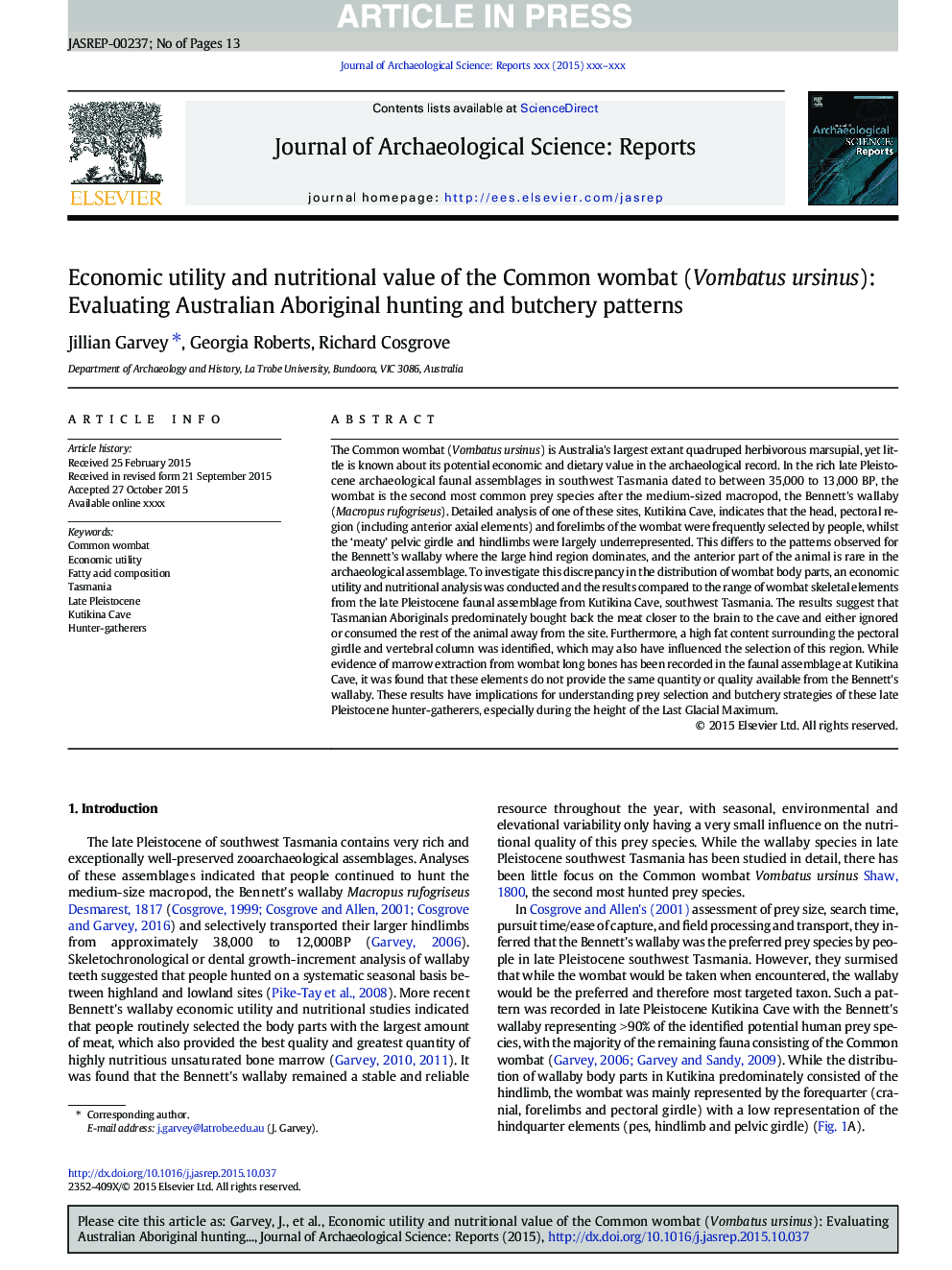| کد مقاله | کد نشریه | سال انتشار | مقاله انگلیسی | نسخه تمام متن |
|---|---|---|---|---|
| 7445725 | 1483936 | 2016 | 13 صفحه PDF | دانلود رایگان |
عنوان انگلیسی مقاله ISI
Economic utility and nutritional value of the Common wombat (Vombatus ursinus): Evaluating Australian Aboriginal hunting and butchery patterns
دانلود مقاله + سفارش ترجمه
دانلود مقاله ISI انگلیسی
رایگان برای ایرانیان
کلمات کلیدی
موضوعات مرتبط
علوم انسانی و اجتماعی
علوم انسانی و هنر
تاریخ
پیش نمایش صفحه اول مقاله

چکیده انگلیسی
The Common wombat (Vombatus ursinus) is Australia's largest extant quadruped herbivorous marsupial, yet little is known about its potential economic and dietary value in the archaeological record. In the rich late Pleistocene archaeological faunal assemblages in southwest Tasmania dated to between 35,000 to 13,000Â BP, the wombat is the second most common prey species after the medium-sized macropod, the Bennett's wallaby (Macropus rufogriseus). Detailed analysis of one of these sites, Kutikina Cave, indicates that the head, pectoral region (including anterior axial elements) and forelimbs of the wombat were frequently selected by people, whilst the 'meaty' pelvic girdle and hindlimbs were largely underrepresented. This differs to the patterns observed for the Bennett's wallaby where the large hind region dominates, and the anterior part of the animal is rare in the archaeological assemblage. To investigate this discrepancy in the distribution of wombat body parts, an economic utility and nutritional analysis was conducted and the results compared to the range of wombat skeletal elements from the late Pleistocene faunal assemblage from Kutikina Cave, southwest Tasmania. The results suggest that Tasmanian Aboriginals predominately bought back the meat closer to the brain to the cave and either ignored or consumed the rest of the animal away from the site. Furthermore, a high fat content surrounding the pectoral girdle and vertebral column was identified, which may also have influenced the selection of this region. While evidence of marrow extraction from wombat long bones has been recorded in the faunal assemblage at Kutikina Cave, it was found that these elements do not provide the same quantity or quality available from the Bennett's wallaby. These results have implications for understanding prey selection and butchery strategies of these late Pleistocene hunter-gatherers, especially during the height of the Last Glacial Maximum.
ناشر
Database: Elsevier - ScienceDirect (ساینس دایرکت)
Journal: Journal of Archaeological Science: Reports - Volume 7, June 2016, Pages 751-763
Journal: Journal of Archaeological Science: Reports - Volume 7, June 2016, Pages 751-763
نویسندگان
Jillian Garvey, Georgia Roberts, Richard Cosgrove,